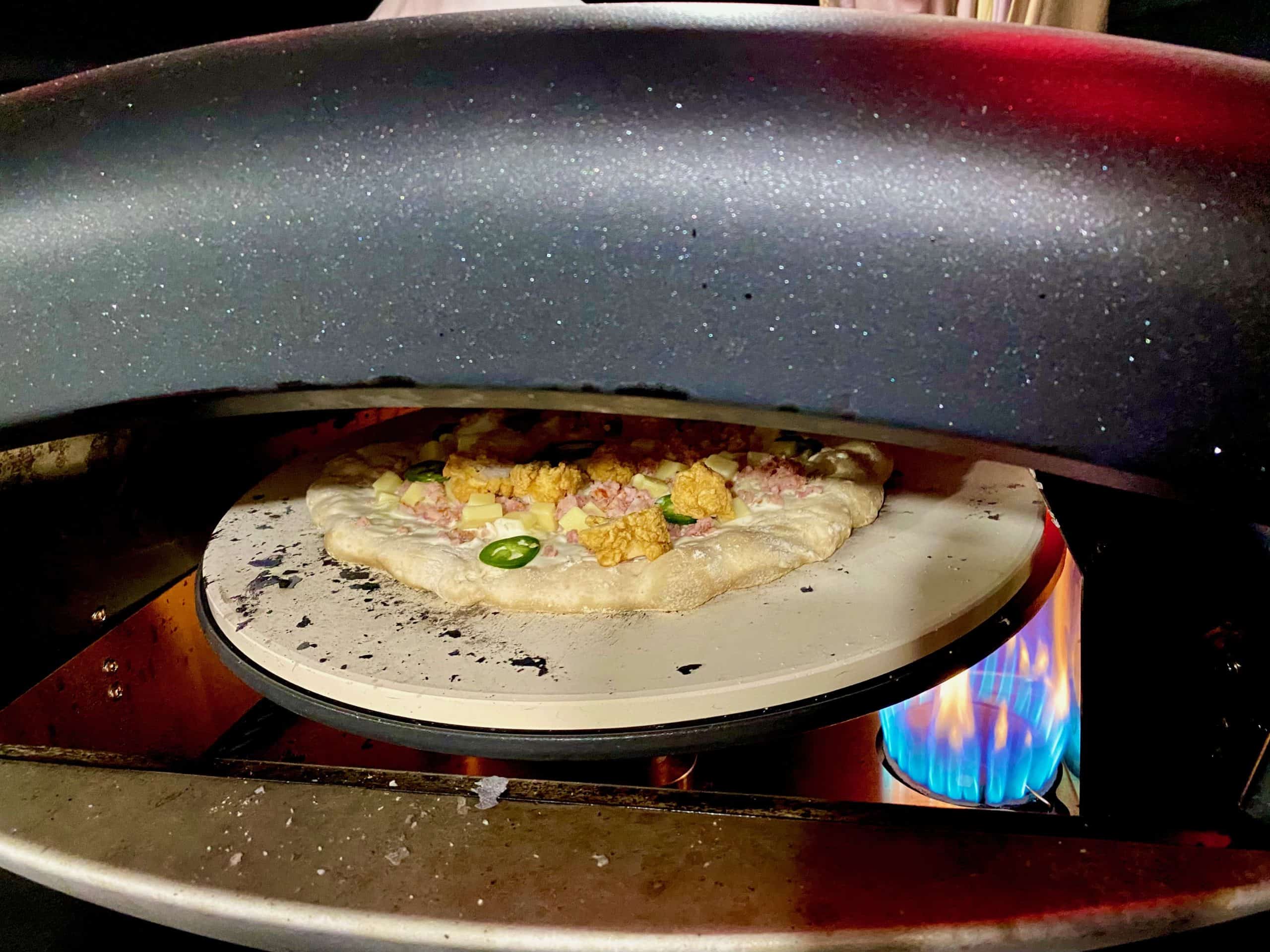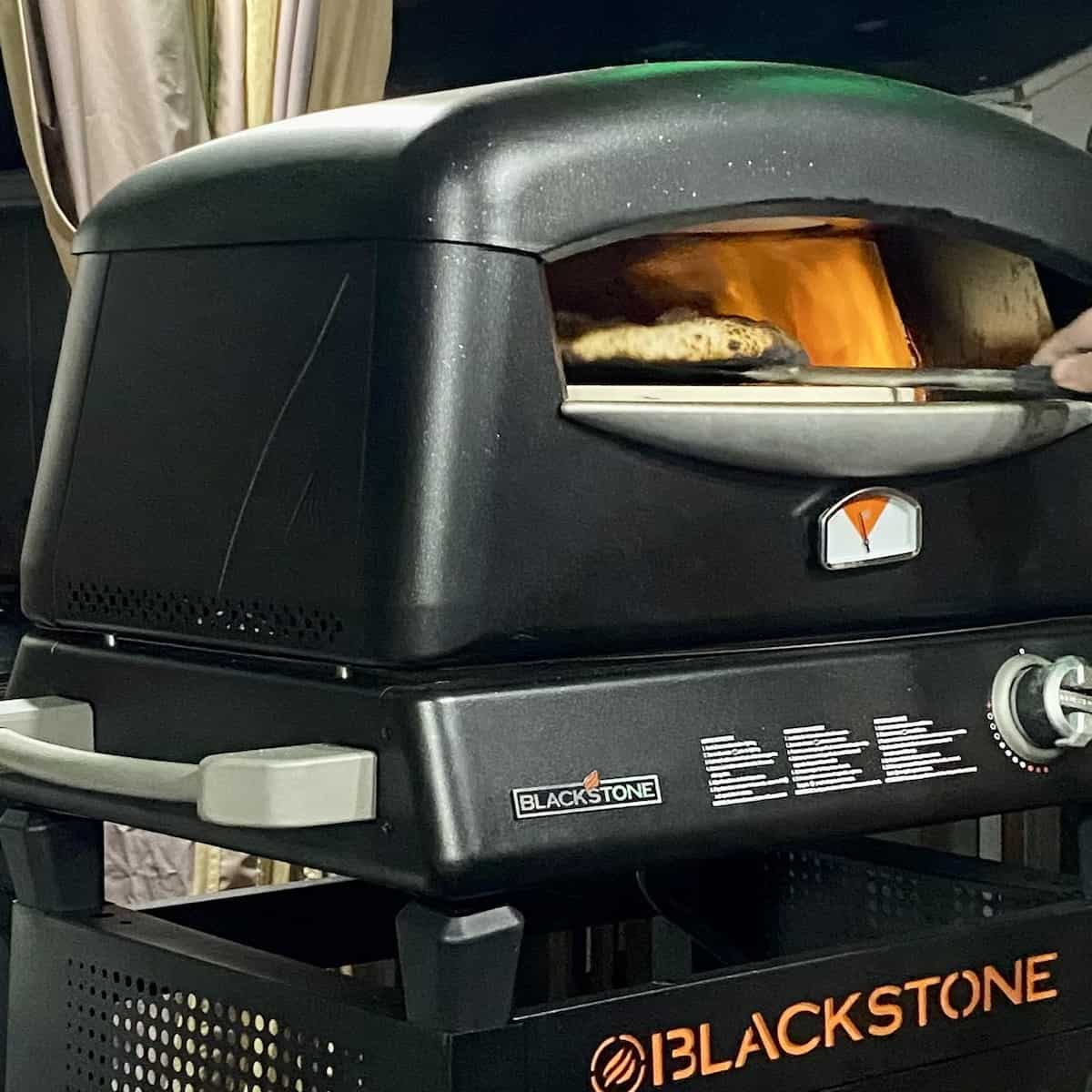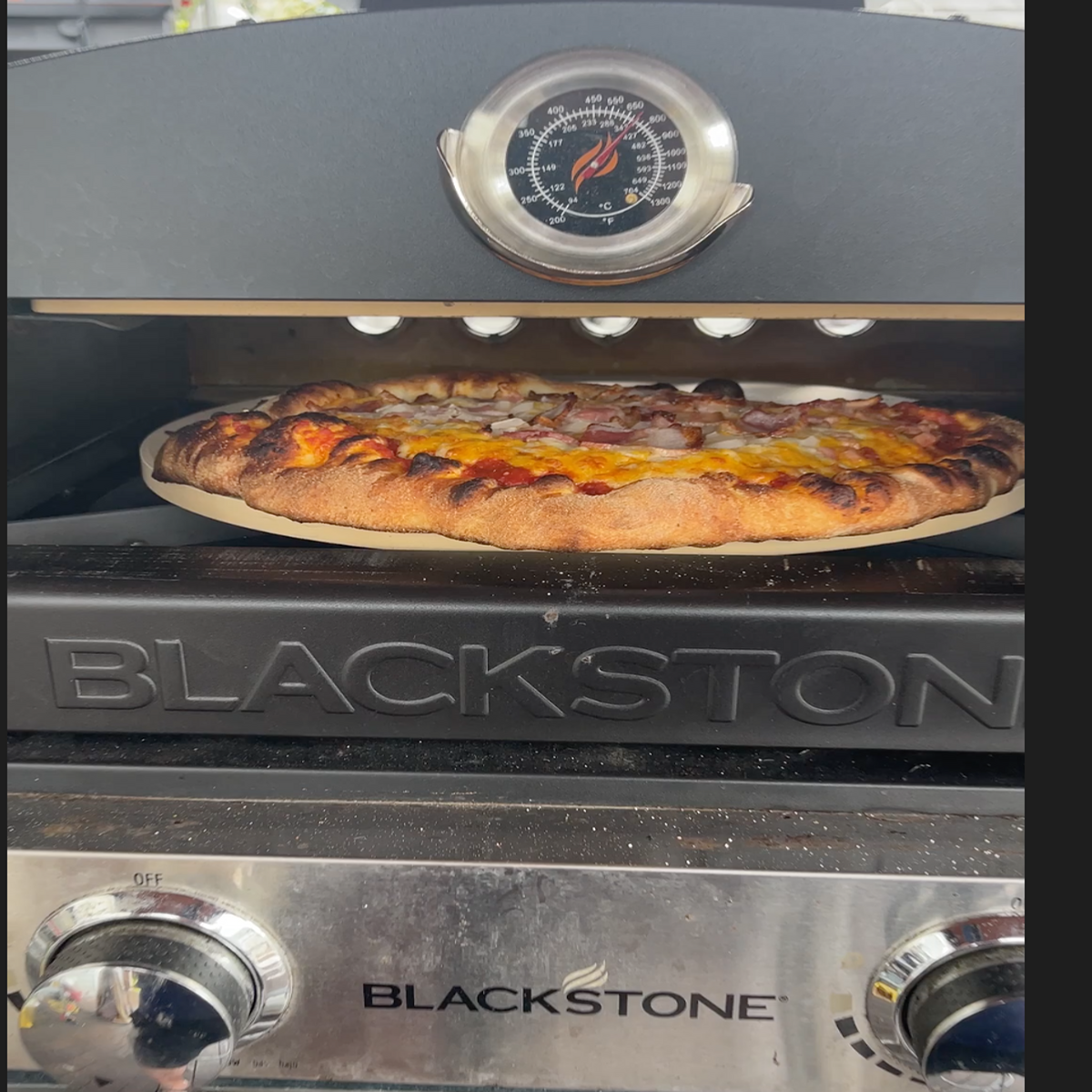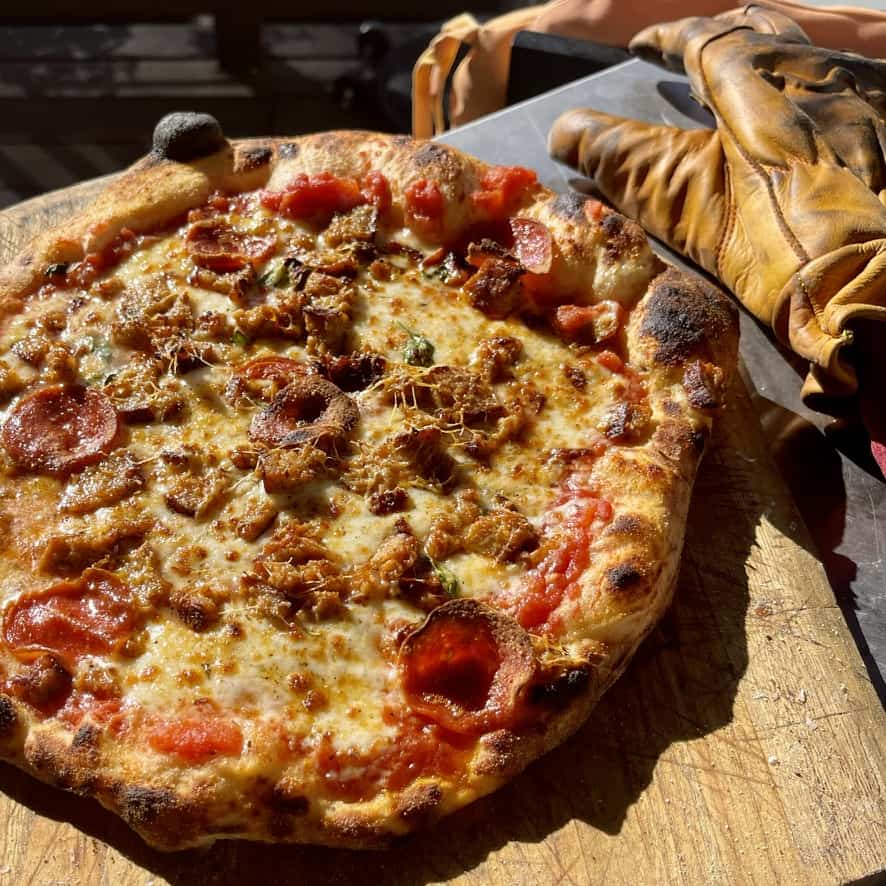The Blackstone pizza oven has revolutionized home pizza making, offering a way to achieve that authentic, wood-fired pizza taste right in your backyard. However, launching a pizza into this oven can be a bit daunting for beginners. This guide will walk you through every step, ensuring your pizza lands perfectly every time.
Understanding Your Blackstone Pizza Oven
The Blackstone Pizza Oven stands out in the culinary world for its efficiency and ability to replicate the intense heat of a traditional wood-fired oven. Key to its design in certain models is the rotating turntable, which ensures your pizza cooks evenly without the need to manually turn it. This feature is a boon for both novice and experienced cooks, as it reduces the risk of one side being overcooked or undercooked. Before making your first pizza, familiarize yourself with the oven's operation, particularly how to manage the heat and the turntable speed, to create the ideal cooking environment for your pizzas.

Chicken cordon bleu pizza
Essential Tools for Pizza Launching
A successful pizza launch begins with the right tools. The most critical among these is the pizza peel, which you'll use to transfer your pizza onto the hot stone smoothly. When dealing with a Blackstone oven equipped with a rotating turntable, choose a sturdy yet thin peel to slide under the pizza easily. Metal peels are excellent for this purpose, offering a good balance between strength and thinness. Additionally, consider investing in a good pair of heat-resistant gloves and a pizza cutter for handling and serving your pizzas safely and efficiently.
Preparing Your Pizza for Launch
The foundation of any great pizza is its dough. When preparing your pizza for the Blackstone oven, take into account the unique cooking environment it offers. If your oven features a rotating turntable, you'll want to ensure your dough is evenly stretched and toppings are well-distributed to avoid imbalance as it cooks. Aim for a consistency in your dough that’s neither too thick nor too thin, allowing it to cook thoroughly and evenly. As for toppings, less is more; overloading your pizza can result in a soggy center and uneven cooking, especially with the turntable in motion.
The Art of Launching a Pizza
Launching a pizza into a Blackstone oven with a rotating turntable requires a blend of timing and technique. Begin by lightly flouring your peel to prevent sticking, then carefully transfer your prepared pizza onto the peel. Check the oven’s temperature to ensure it’s reached the optimal heat — usually between 600°F to 700°F for most pizzas. Gently slide the pizza onto the center of the hot turntable, quickly closing the oven door to retain heat. The rotating mechanism will take care of the rest, evenly exposing all sides of the pizza to the intense heat for a perfect cook.
Temperature and Timing Secrets
Achieving the perfect pizza in a Blackstone oven is all about mastering temperature and timing, especially with the rotating turntable feature. The turntable ensures even cooking, but it’s essential to find the right temperature setting that cooks your pizza dough through without burning the toppings. Start by preheating your oven to the high end of the recommended range, then adjust based on the cooking performance of your first pizza. Most pizzas will cook beautifully in 2 to 5 minutes in these ovens, depending on the thickness of the dough and the amount of toppings. Use an infrared thermometer to check the stone’s temperature for more precise control.
After the Launch: Monitoring Your Pizza
Once your pizza is in the oven, the rotating turntable does much of the work in ensuring an even cook. However, it’s still important to monitor the cooking process, especially the first few times you use the oven. Look for the cheese to bubble and the crust to char slightly — classic signs of a well-cooked pizza. If your oven doesn't feature a viewing window, you may need to open it briefly to check on the pizza's progress, being careful not to let too much heat escape.
Safety Tips and Maintenance
Safety and maintenance are crucial for ensuring your Blackstone pizza oven continues to perform at its best. Always use heat-resistant gloves when inserting or removing pizzas from the oven, and follow the manufacturer’s instructions for cleaning and maintenance. For models with a rotating turntable, regular checks to ensure smooth operation are essential. Keep the turntable clean and free of debris to prevent it from sticking or malfunctioning.
Integrating the unique features of the Blackstone Pizza Oven, especially the rotating turntable, into your pizza-making process can elevate your home-cooked pizzas to new heights. With practice, the right tools, and a bit of culinary creativity, you'll be serving up perfectly cooked, pizzeria-quality pizzas to the delight of friends and family.
FAQs
How long should I preheat my Blackstone pizza oven?
Preheating your Blackstone pizza oven is critical to ensure the perfect cook on your pizza. The ideal preheating time varies depending on ambient temperature and wind conditions, but as a general rule, you should preheat your oven for at least 15 to 20 minutes before launching your pizza. This allows the stone to reach an even, high temperature, essential for achieving that crispy crust and evenly cooked toppings. In colder weather, you might need to extend the preheating time to ensure the stone is adequately heated.
Can I use store-bought dough in my Blackstone pizza oven?
Absolutely, you can use store-bought dough in your Blackstone pizza oven. While making your dough from scratch allows for more customization and control over the flavor and texture, store-bought dough is a convenient and time-saving option that can still yield delicious results. Allow the dough to come to room temperature before stretching it out for the best outcome. This makes handling easier and helps avoid tearing, ensuring your pizza base is the perfect foundation for your toppings.
What's the best way to clean the pizza stone?
Cleaning the pizza stone in your Blackstone oven is simple but requires care to maintain its integrity and cooking performance. After use, let the stone cool completely before attempting to clean it. Avoid using soap or detergent, as the stone can absorb these substances, potentially affecting the taste of your future pizzas. Instead, scrape off any stuck-on food with a stone brush or a spatula. For tougher residues, you can use a small amount of water and a scrub brush, then let the stone air-dry or place it in a warm oven to completely remove moisture. Regularly cleaning your pizza stone will keep it in optimal condition for baking.
How can I prevent the bottom of my pizza from burning?
Preventing the bottom of your pizza from burning in a Blackstone pizza oven involves controlling the heat and the cooking time. First, ensure that your oven is preheated to the right temperature, as too high heat can cause the bottom to burn before the top is properly cooked. Use an infrared thermometer to check the stone's surface temperature. Aim for a cooking surface temperature of around 650 to 700 degrees Fahrenheit for the best results. Additionally, rotating your pizza halfway through cooking can help ensure an even bake that you need not worry about if using one of Blackstone's oven's with a rotating turntavble.
If you find the bottom cooking too quickly, try lowering the heat slightly or raising the pizza a bit higher from the stone using a pizza screen for part of the cooking time.
Is it possible to cook a frozen pizza in the Blackstone oven?
Yes, cooking a frozen pizza in the Blackstone oven is possible, but there are a few considerations to keep in mind for the best results. Since frozen pizzas are designed to go from freezer to oven with minimal preparation, you'll need to adjust the heat settings of your Blackstone oven. Set it to a lower temperature than you would for a fresh pizza to avoid burning the crust before the toppings are fully heated. Keep a close eye on the pizza as it cooks, and consider using a pizza screen to prevent direct contact with the extremely hot stone, which can lead to burning.
Can I make gluten-free pizza in the Blackstone pizza oven?
Making gluten-free pizza in the Blackstone pizza oven is possible and yields delicious results that everyone can enjoy. The gluten-free dough tends to be more delicate than its wheat-based counterpart, so handle it gently when stretching it out to avoid tearing. Since gluten-free dough can behave differently under high heat, start with a slightly lower temperature and adjust as needed. Pay close attention to the cooking process, as the absence of gluten can affect how quickly the crust cooks. With some practice, you'll find that your Blackstone oven can produce gluten-free pizzas that are just as crispy and satisfying as traditional ones.
Conclusion
Launching a pizza into a Blackstone pizza oven is an enjoyable and rewarding experience. With the right tools, preparation, and a bit of practice, you'll be creating pizzeria-quality pizzas in no time. Remember, every pizza is an opportunity to experiment and perfect your technique. Happy cooking!





Comments
No Comments